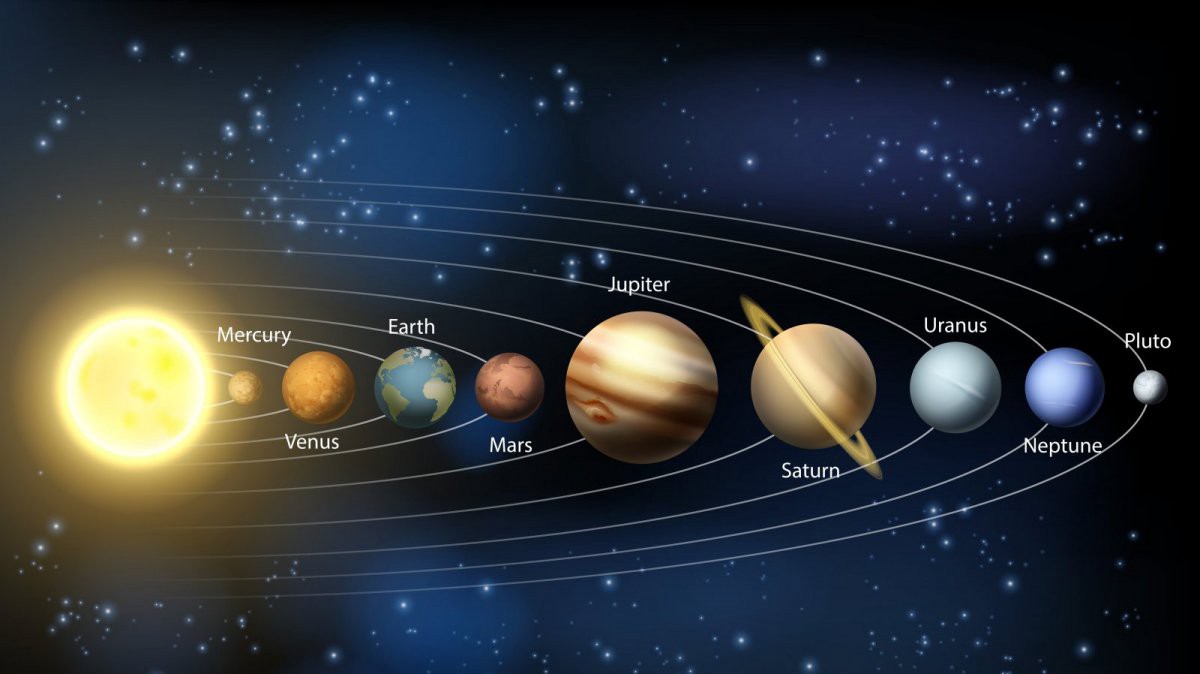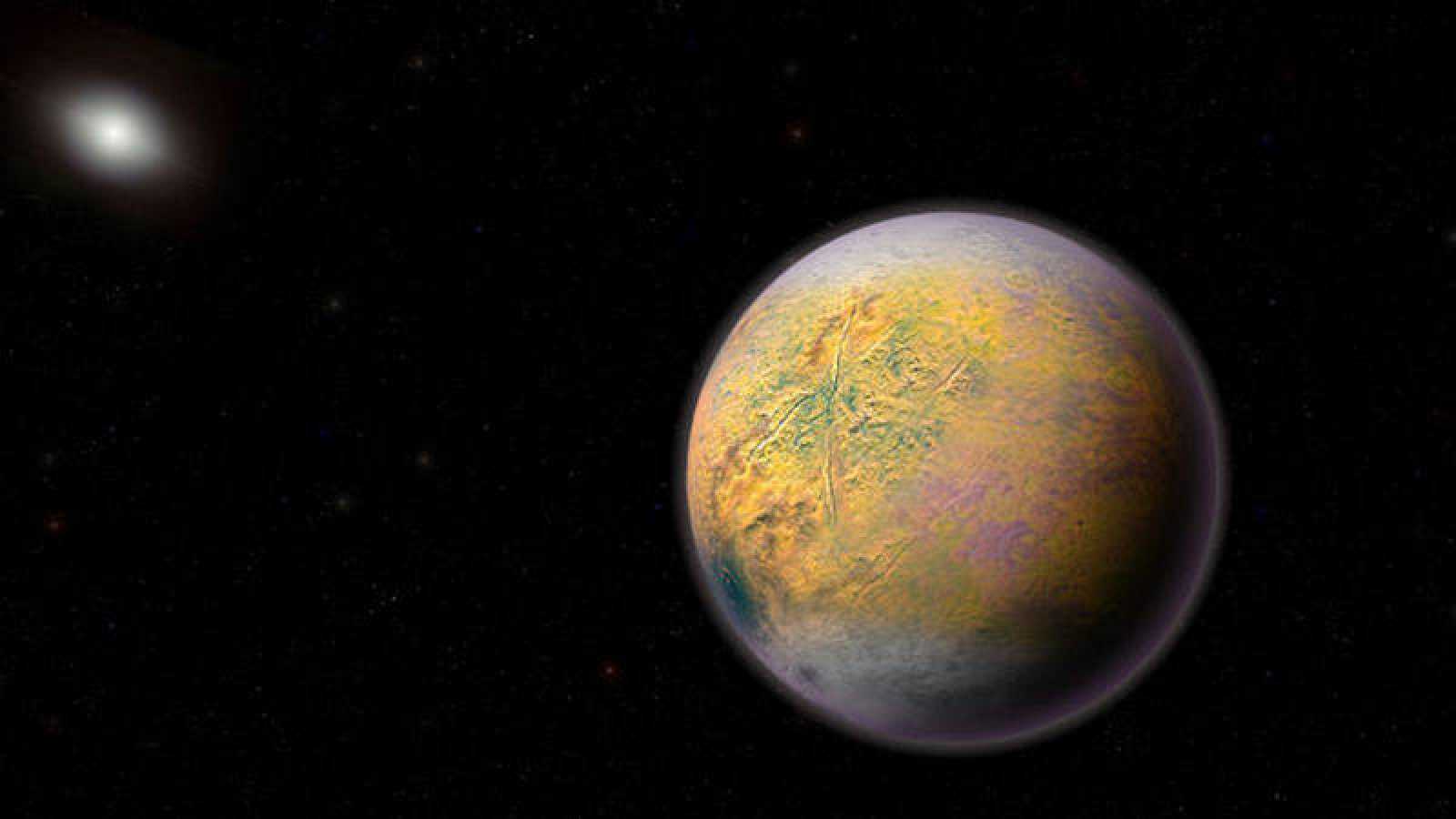If you are interested in knowing what are the characteristics of the planets of the solar system for children, then we invite you to read this article, in which you can find everything you need to be able to explain this knowledge in a good way.

What is the solar system?
The Universe is made up of everything that has existence. Inside it are located all the living and non-living elements, what floats, what can be seen, what cannot be seen, what moves or what does not move. The universe contains all things.
Inside the Universe we can find dust, planets, stars, galaxies and multiple objects. Galaxies come in many forms, ours is called the Milky Way and has the shape of a disc that is characterized by spiral movement. Within the Milky Way we can locate the Solar System, of which the Earth is a part.
The name Solar System comes from the fact that at its center is the Sun, which is a bright, hot and huge star, and it is the closest star to Earth. Due to the existence of the Sun, it is possible for life to be sustained on Earth, since if we did not receive its energy and heat, the Earth would be a dark, deserted, ice planet. In those conditions, nothing could survive, or at least not the forms of life that we know.
Now, surrounding the Sun, there are 8 planets, which can be defined as spheres that can be made of gas or rocks and that are very different from each other. In addition, we can also find smaller fractions of rocks and other objects such as asteroids within the Solar System.
From the above, we can conclude that the Solar System is a grouping of all the celestial bodies that transit around the Sun, both planets and comets, asteroids and some small planets that are called dwarf planets.
What are the planets of the Solar System?
The planets that make up the Solar System, in order of their proximity to the Sun, are: Mercury, Venus, Earth, Mars, Jupiter, Saturn, Uranus, and Neptune. The first four are called inner planets and the last 4 are called outer. The reason for this is that they are divided by a band of rocks called the asteroid belt.
This means that after Mars, there is this strip made up of millions of asteroids of multiple kinds, but there is also cosmic dust. All these bodies also revolve around the Sun and move together, although sometimes they collide with each other.
Mercury, Venus, Earth and Mars are the so-called rocky planets, because they are made up of rocks, however, Jupiter, Saturn, Uranus and Neptune are big balls made up of gases and some seem not to have a solid extension, that is, a firm territory. as if it happens on Earth. Because the outer planets are the farthest from the Sun, heat and light do not reach them like the inner planets.
Characteristics of the Planets of the Solar System
As we already indicated, the Solar System is made up of a star, which we call the Sun and which is located in its center; and 8 planets that rotate in a circular way around it, called orbits. Another characteristic is that the planets also have a rotating movement on themselves and several have rocky objects that also have a rounded or orbital movement around them, and we call them satellites or moons. Earth's satellite is the moon, as you already know.
The 8 planets of the Solar System have many differences. We certainly believe that the Earth is a spectacular place, but the other planets are also, in their own characteristics, and scientists have been able to discover very interesting questions about them. And here we are going to explain them:
Mercury
It is the first planet of the Solar System, because it is the one that is closest to the Sun. Because Pluto was declassified as a planet, Mercury became the smallest of all the planets. Its orbital path around the Sun lasts 88 Earth days.
Venus
The second planet in distance to the solar star, but it is the planet with the highest temperature since the gases found in its atmosphere hardly allow heat to escape into space. It is smaller than the Earth, and its way of Orbit complete orbit around the Sun takes approximately 225 Earth days. Something unusual about the planet Venus is that it rotates in the opposite direction, this means that it does it in the opposite direction to how the rest of the planets in the Solar System do.
Earth
It is the third planet in relation to the distance from the Sun, and it is where we live. As far as is known, it is the only planet in the Solar System that is home to life and water in the form of oceans, its atmosphere contains a lot of oxygen and it has countless natural wonders. As the researchers have concluded, its formation began shortly after the Sun formed, approximately 4.5 billion years ago.
Mars
Many people and publications refer to it as the red planet, because its surface contains iron oxide, an element that is reddish in color and gives it that appearance. As in the case of the three planets mentioned above, it has a floor that is solid rock.
A hypothesis that has interested many scientists today is that it is likely that Mars could have had life in the past, and that it could still have it, although a little different from Earth. There are plans so that in the future terrestrial colonies can be installed on Mars.
Jupiter
The Asteroid Belt that we have mentioned before, separates Mars from Jupiter, the latter being the one with the largest volume in the entire Solar System. It is a huge ball made up of gases and has more satellites or moons than any other planet in the system, more than 70. One of its most peculiar characteristics is that it has a Great Red Spot, which is actually a storm in the form of a whirlpool , whose size is even greater than that of the Earth.
Saturn
El Planet Saturn It is another ball made up of gases, but the reason why it is better known is because it has a beautiful and incredible group of rings whose composition is made up of millions of ice fragments. It is the sixth planet with respect to its position on the Sun, and is at a distance of 1.4 billion kilometers from it.
Uranus
It is also a planet composed of gases that has narrow rings, but they are not as spectacular or observable as those of Saturn. It is a planet that has almost twice the volume of Neptune and looks blue because its atmosphere is made of a gas called methane. It does not make a turn on itself, as the other planets of the Solar System do, rather it makes a sideways turn.
Neptuno
It is the smallest planet composed of gases in the Solar System and the furthest from the Sun. For that reason it is an ice planet. It has extremely strong winds and the time it takes to complete its orbit around the sun is 165 Earth years. In 2011, it completed its journey around the Sun since it was discovered in 1846.

